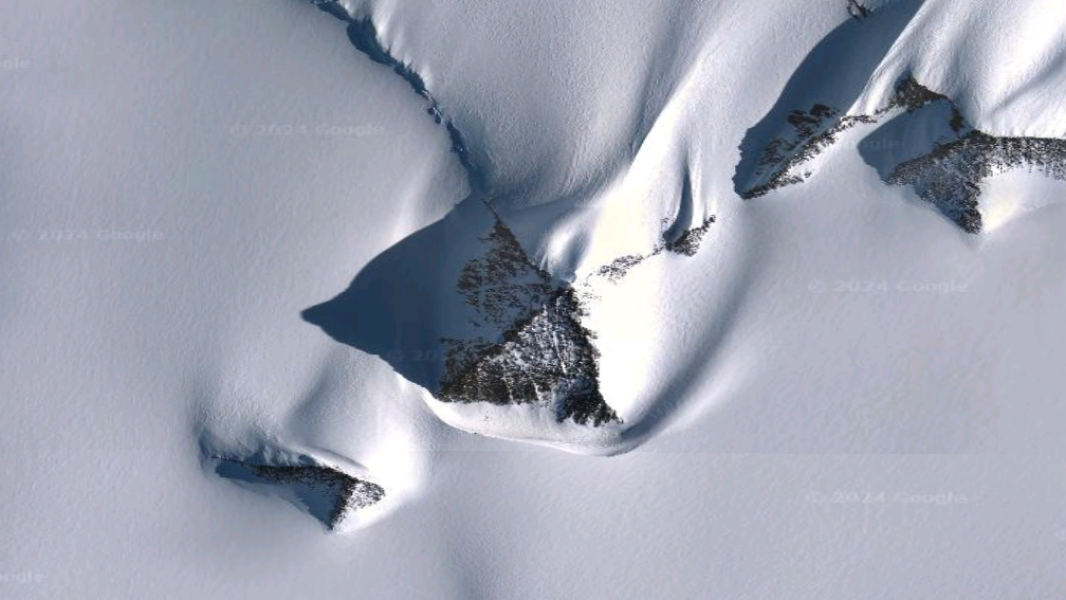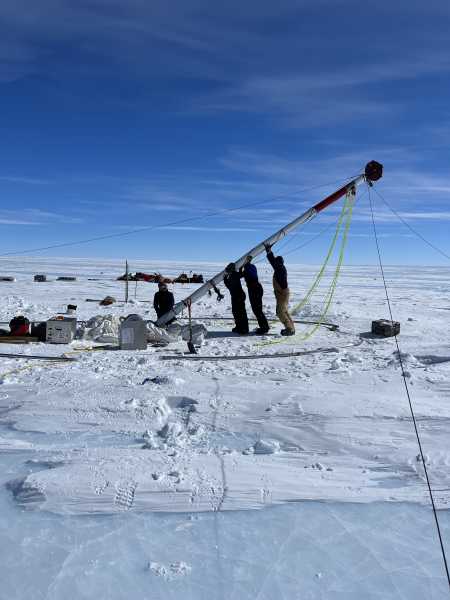
Pyramid Mountain in Antarctica gained popularity online in 2016. (Image credit: Google Maps)
A mountain buried under snow in Antarctica bears a striking resemblance to an ancient Egyptian pyramid when viewed from above. But no human (or alien) effort was needed to form this peak – it was created by a slow and destructive process of erosion.
The pyramid mountain, which has no official name, became known online in 2016, though scientists were likely aware of it before then, Mauri Pelto, a professor of environmental science at Nichols College in Dudley, Massachusetts, previously told Live Science. Climate scientists working at a research base south of the mountain in an area known as Patriot Hills “may be able to observe this mountain,” Pelto added.
The Antarctic “pyramid” stands approximately 4,150 feet (1,265 meters) tall, about one-fifth the height of Denali, the tallest mountain in North America. It has four steep faces and is located at the southern end of the Ellsworth Mountains, a range of jagged peaks first spotted during the flight of American aviator Lincoln Ellsworth in 1935, according to a 2007 study by the U.S. Geological Survey (USGS).
The region is known for its fossils of trilobites and other creatures that are about 500 million years old, dating back to the Cambrian period (541–485.4 million years ago).
The mountain's slopes were likely shaped and smoothed into a pyramidal shape by hundreds of millions of years of erosion. Specifically, the rocks may have been eroded by a freeze-thaw process in which water and snow fill small cracks during the day and then freeze at night, Pelto said. As the water freezes, it expands in the cracks, causing the cracks to enlarge under pressure and eventually cause large chunks of rock to break off from the mountain.
According to Pelto, three sides of the pyramidal mountain appear to have eroded at the same rate, while the fourth side, the eastern ridge, formed independently.
Pelto added that freeze-thaw erosion likely also formed other pyramidal mountains, such as the Matterhorn in the Swiss Alps.
After information about the mountain went viral in 2016, many conspiracy theories arose to explain its shape, with some theorists suggesting that a lost civilization or aliens were involved.
But “it’s just a mountain that looks like a pyramid,” Eric Rignot, a professor of earth sciences at the University of California, Irvine and a senior scientist at NASA’s Jet Propulsion Laboratory, previously told Live Science. “Pyramid shapes aren’t impossible — many peaks are partially pyramidal — but they usually only have one or two pyramidal faces, rarely four.”
Explore amazing places as we uncover the fantastic stories and science behind some of the most spectacular landscapes on Earth.
Antarctica Quiz TOPICS Incredible Places

Sasha PareSocial Links NavigationEmployee
Sasha is a Live Science staff writer.
Sourse: www.livescience.com





